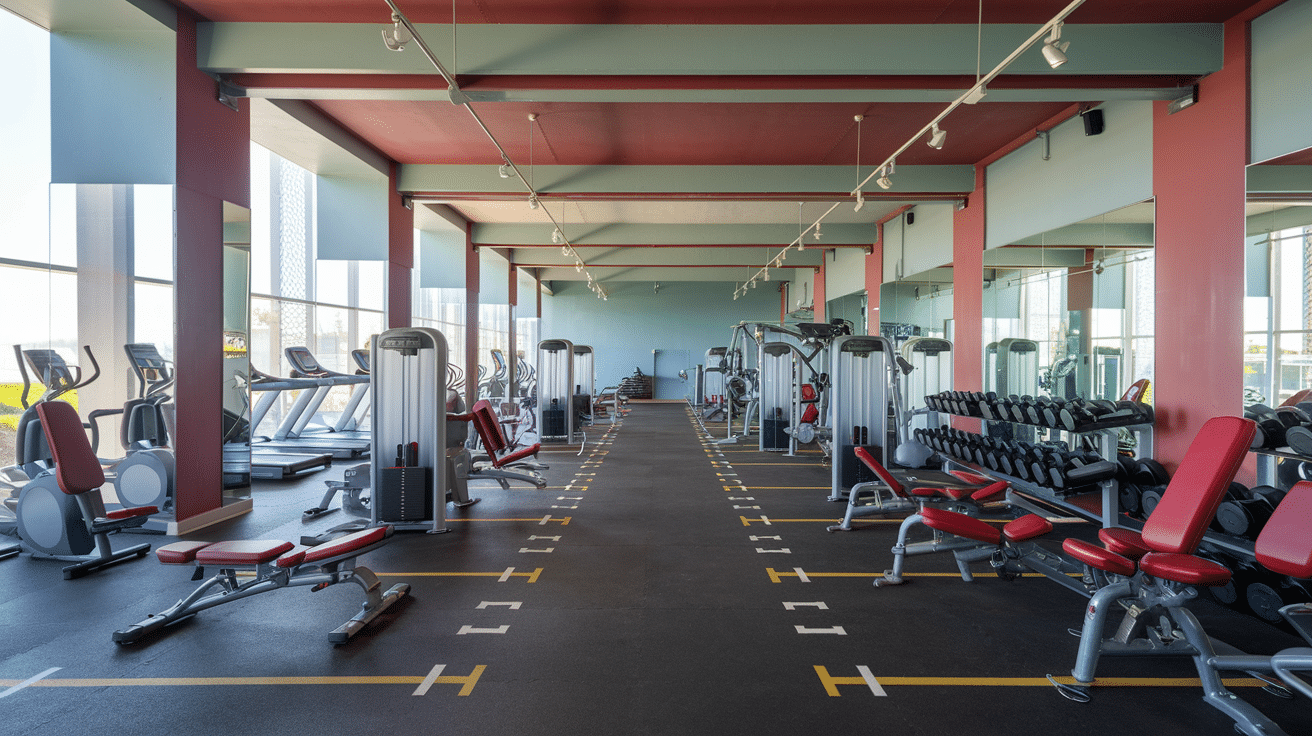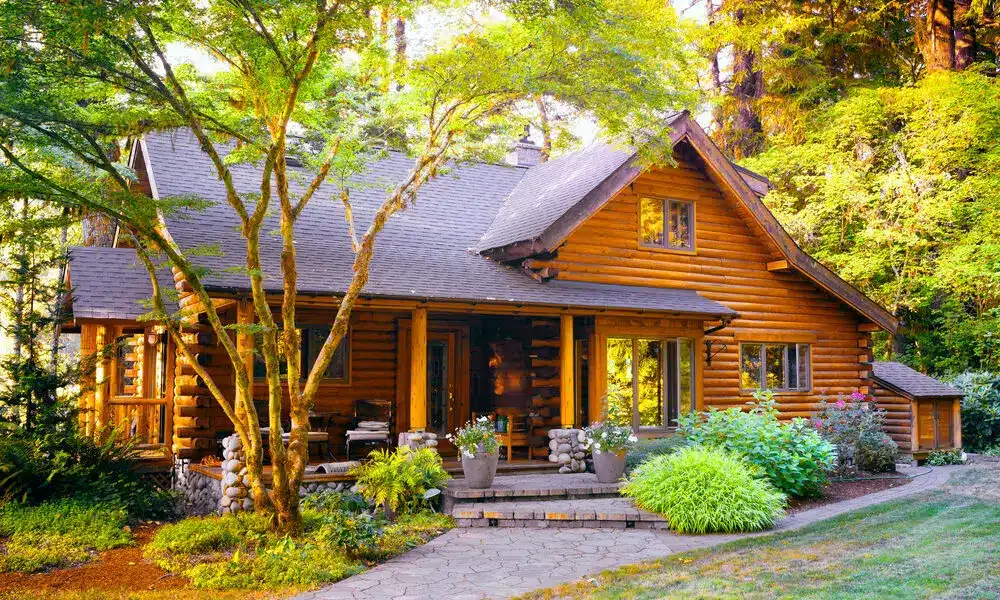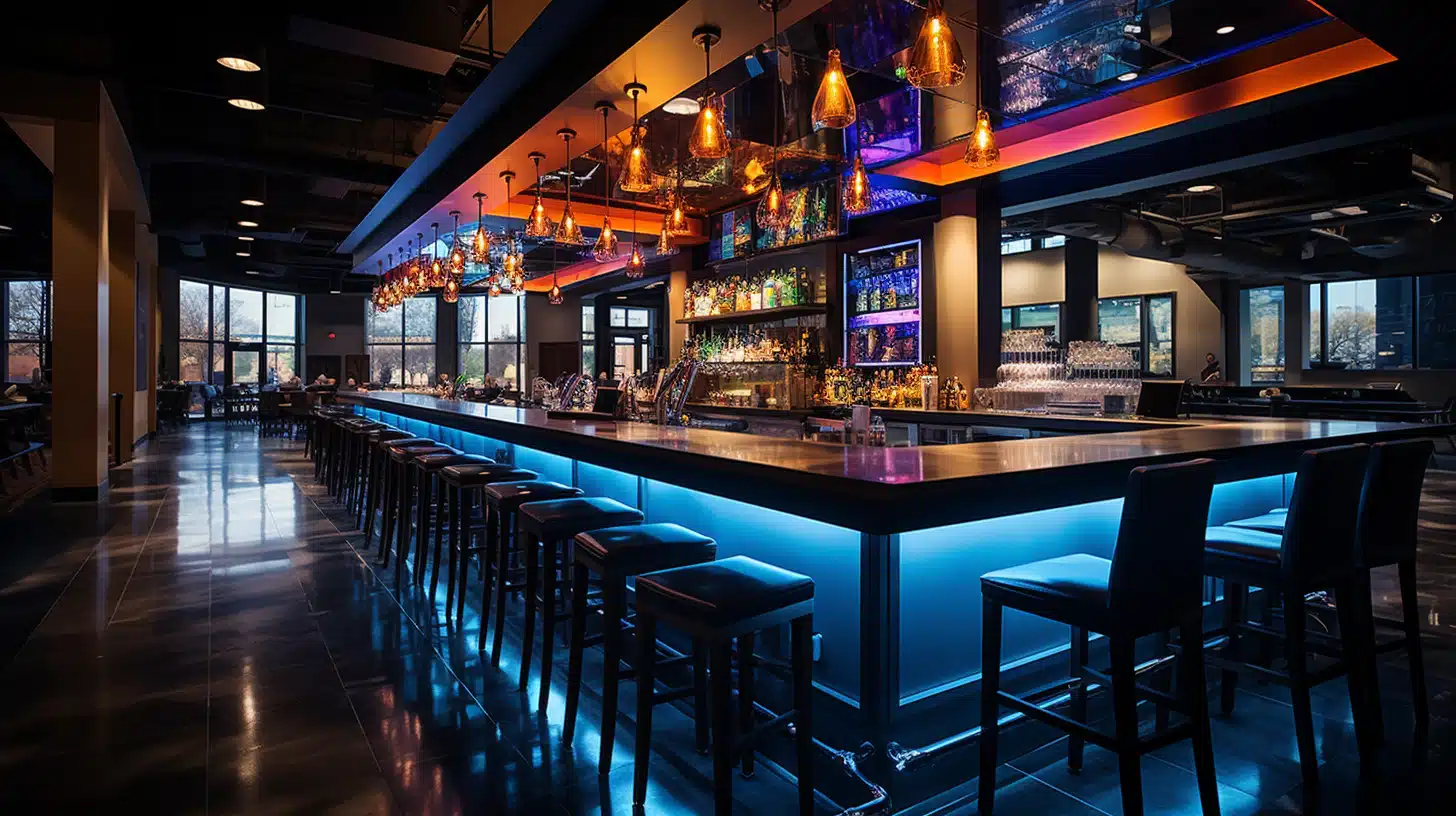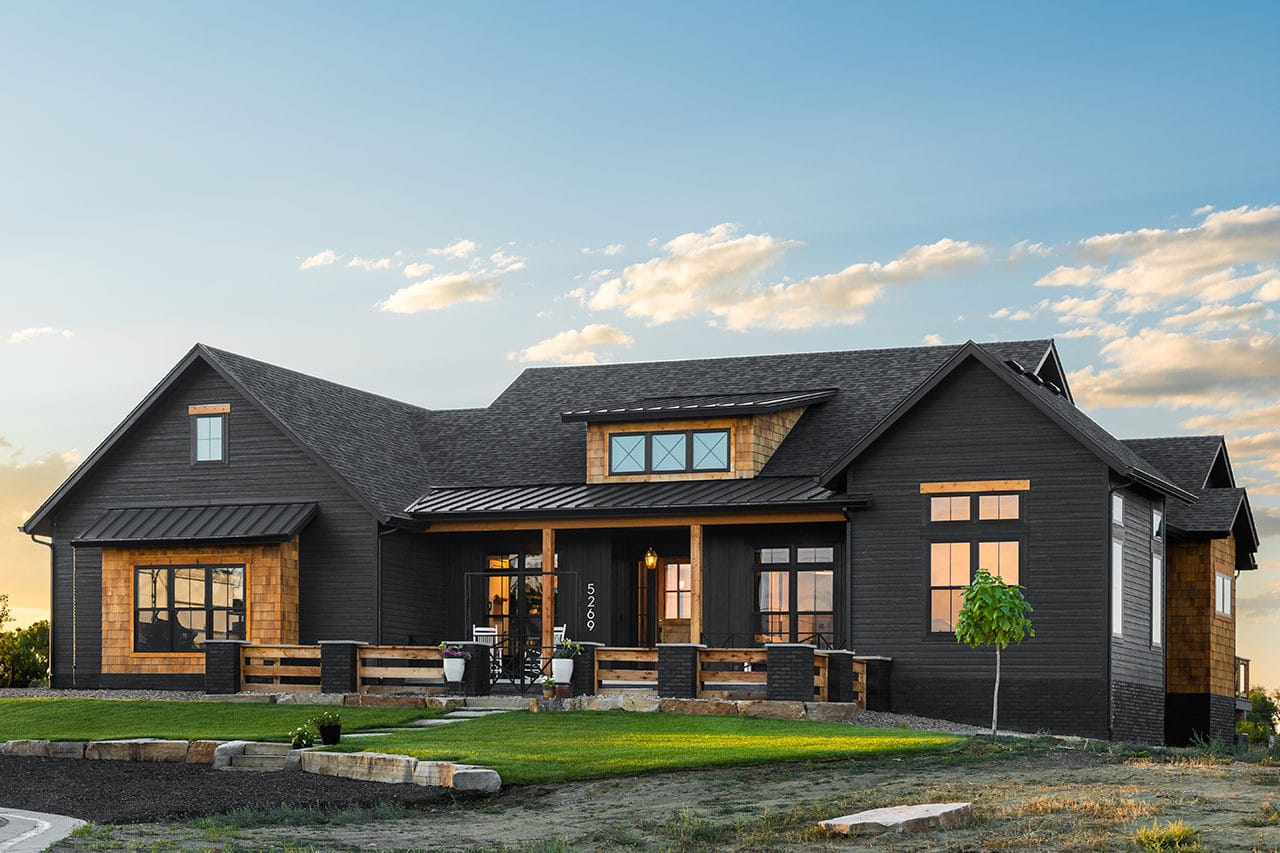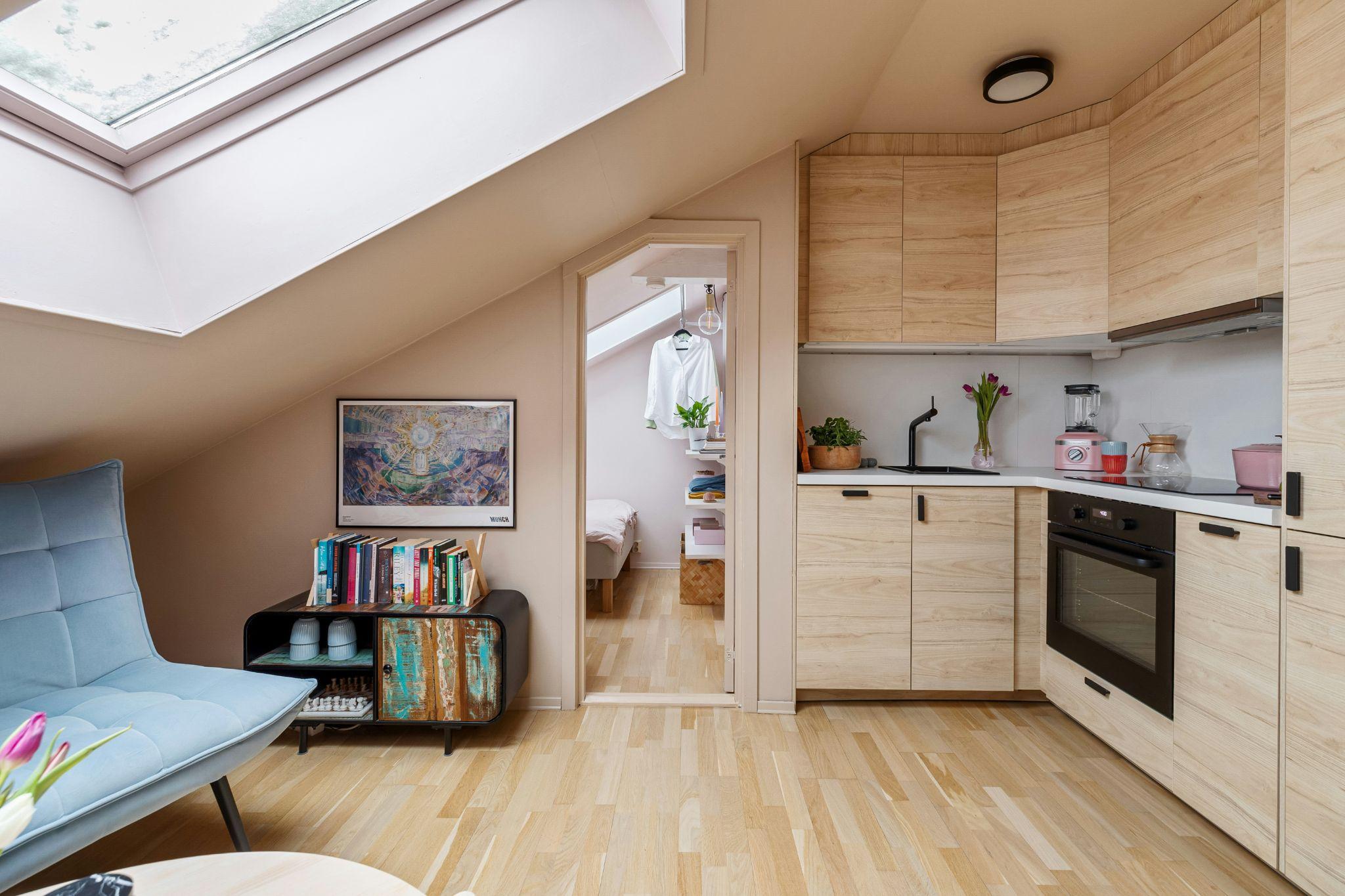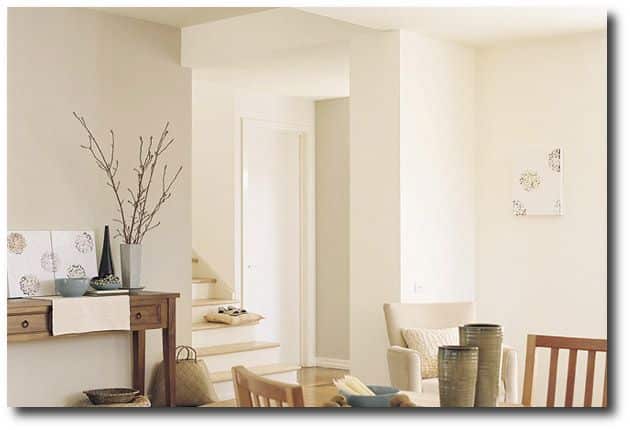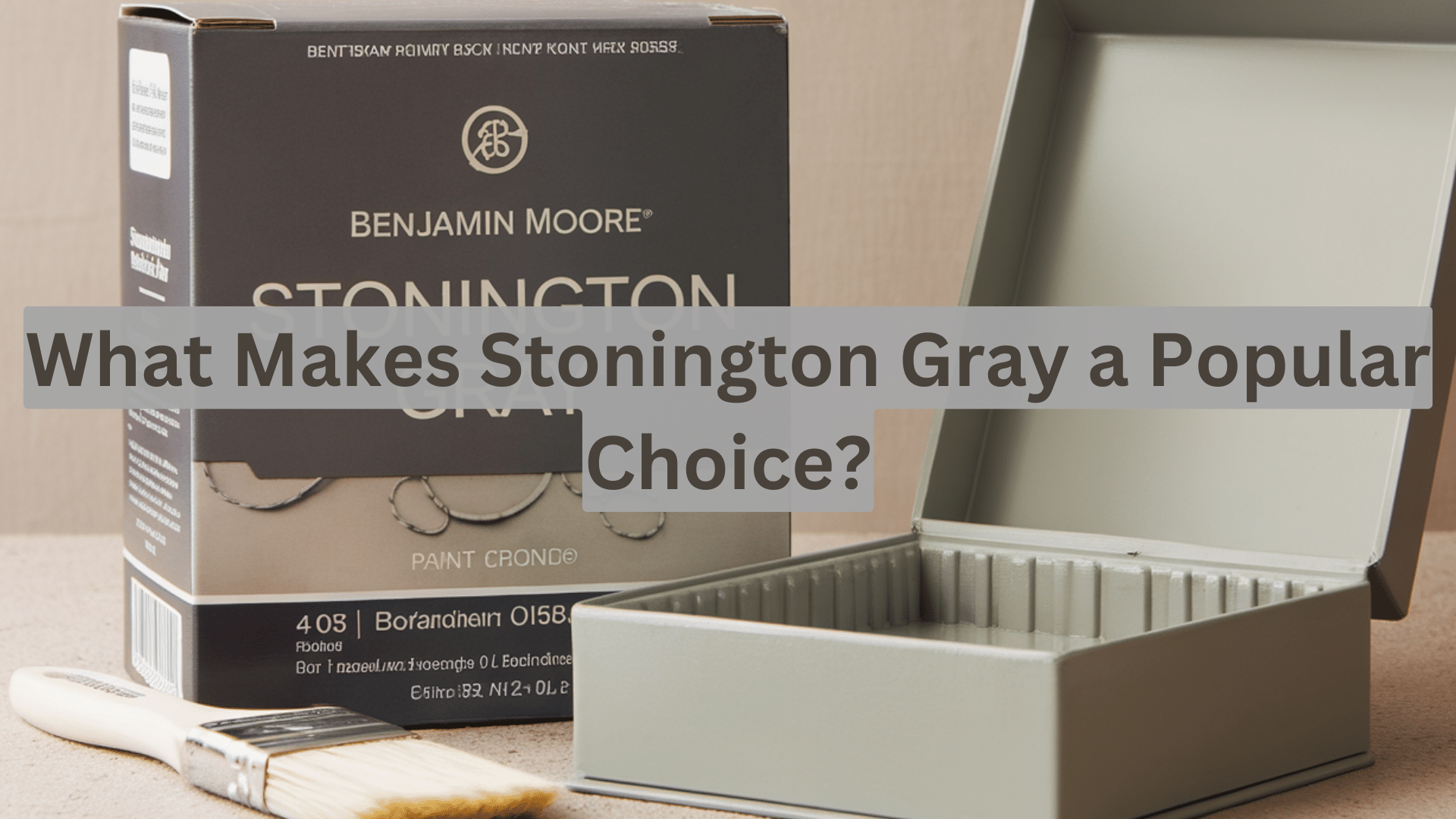Gym Interior Design and Architecture: What Works and Why
A thoughtful gym interior design can change how members use the space, how long they stay, and how often they return.
It’s not just about equipment or paint colors — it’s about creating a space that works.
This blog is for gym owners building from the ground up, property developers adding fitness spaces to buildings, and anyone setting up a gym at home.
You’ll learn what matters most when planning a gym, what choices make the biggest difference, and how to create a space people enjoy using every day.
Let us get started!
Planning Your Gym Interior
Before you begin arranging equipment or choosing materials, it’s important to think through the full purpose of your gym space.
Consider how it will be used daily and who will be using it most often.
A clear plan helps reduce mistakes and makes the process feel more manageable.
You’ll also be able to make smarter choices about layout, lighting, and features that support long-term use.
Define Your Gym Type and Audience
Commercial gyms need to serve many people at once, while home gyms can be set up for your specific needs.
The type of gym you create sets the foundation for all your other design choices.
Your audience influences everything from equipment selection to the overall feel of the space.
Think about who will use your gym. Consider the age groups that will visit, such as teens, adults, or older adults.
Look at their fitness goals, too, like building muscle, losing weight, or just getting healthier.
Also, note how they prefer to work out—some people like exercising alone, others enjoy classes, and some work with trainers.
A gym for serious weightlifters needs different equipment and layout than one for general fitness or older adults. Knowing your main users helps you make better choices.
Set Clear Goals and Budget
Decide what you want your gym to do. Are you making a full-service fitness center or a space focused on certain types of exercise?
Setting clear goals helps you avoid wasting money on equipment or features that don’t serve your main purpose. A well-planned budget keeps your project on track from start to finish.
Consider your space’s physical limits. Look at the floor space you have available. Check the ceiling heights to ensure tall equipment will fit.
Test if floors can properly support heavy equipment without damage.
Note where electrical outlets and plumbing are located to plan equipment placement.
Budget planning is important. Commercial gyms typically cost $50-200 per square foot to build. Home gyms can range from $1,000 for basic setups to $50,000+ for high-end spaces.
Always set aside 10-15% extra for unexpected costs.
Space Layout and Flow of the Gym
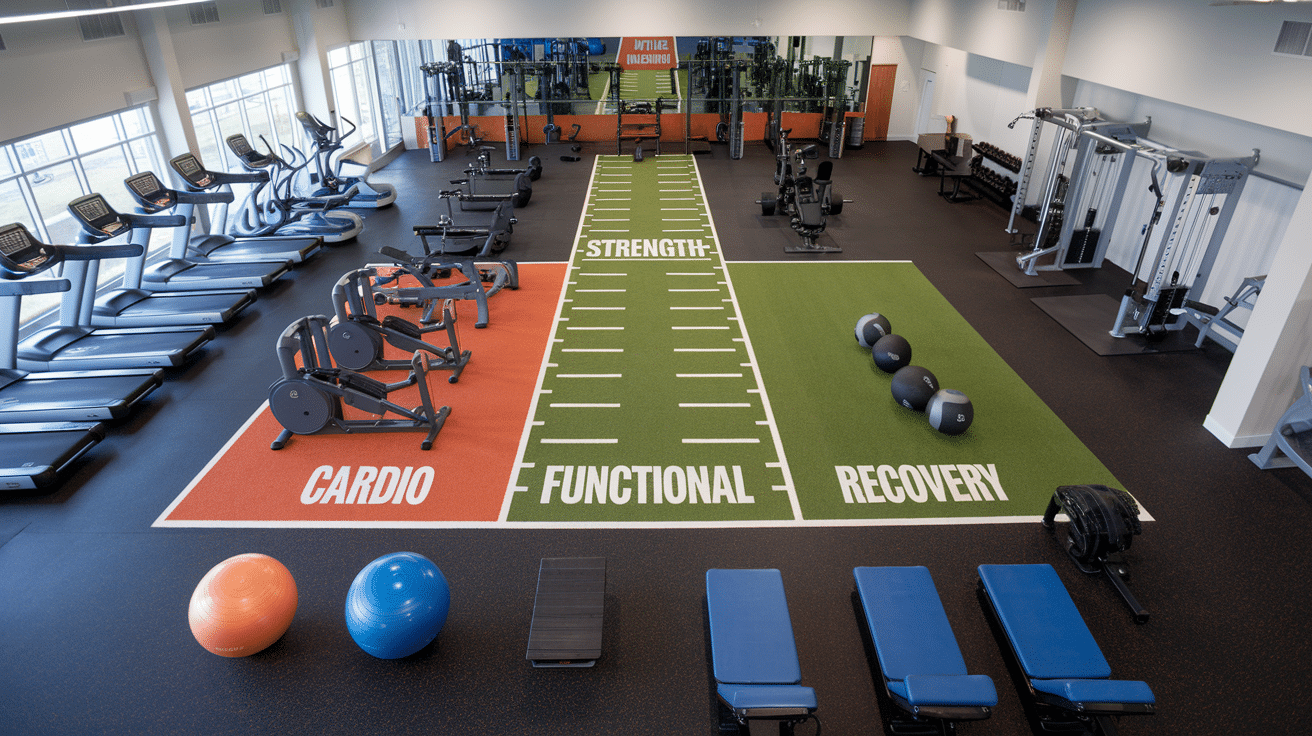
A smart layout helps people move around safely and comfortably. Divide areas by activity type and leave space between machines.
Simple signs or color zones can guide users easily. This keeps the gym clear and easy to use.
Equipment Zones and Floor Planning
Breaking your gym into different zones makes it work better. Create a strength zone with weights, racks, and resistance machines. Set up a cardio zone with treadmills, ellipticals, and bikes.
Include a functional zone with open space and versatile equipment. Add a recovery zone with areas for stretching and cooldown.
Smart zoning helps both beginners and advanced users feel comfortable. It creates a natural flow from one exercise type to another. Good zones also help separate noisy activities from quieter ones.
For a 2,500 sq ft commercial gym, you might use about 40% of the space for strength training.
Allow 30% for cardio equipment to give members enough options. Set aside 20% for functional training areas where people can move freely. The remaining 10% can serve as recovery and stretching space.
Smaller spaces need smart planning. To save space, a 400-square-foot home gym might focus on equipment that serves multiple purposes.
Space Efficiency Tips
Make clear paths between different parts of the gym. Machines should be at least 3 feet apart, with 5-6 feet in busy areas.
Good traffic flow is essential for a functional gym. To make workouts more enjoyable, put cardio equipment where people can see TVs or windows.
To prevent accidents, keep free-weight areas away from main walkways. Make sure paths are at least 36 inches wide so everyone can move around easily.
Set up equipment so staff can see all areas for better safety and service.
Elements that Matter in Gym Interior Design
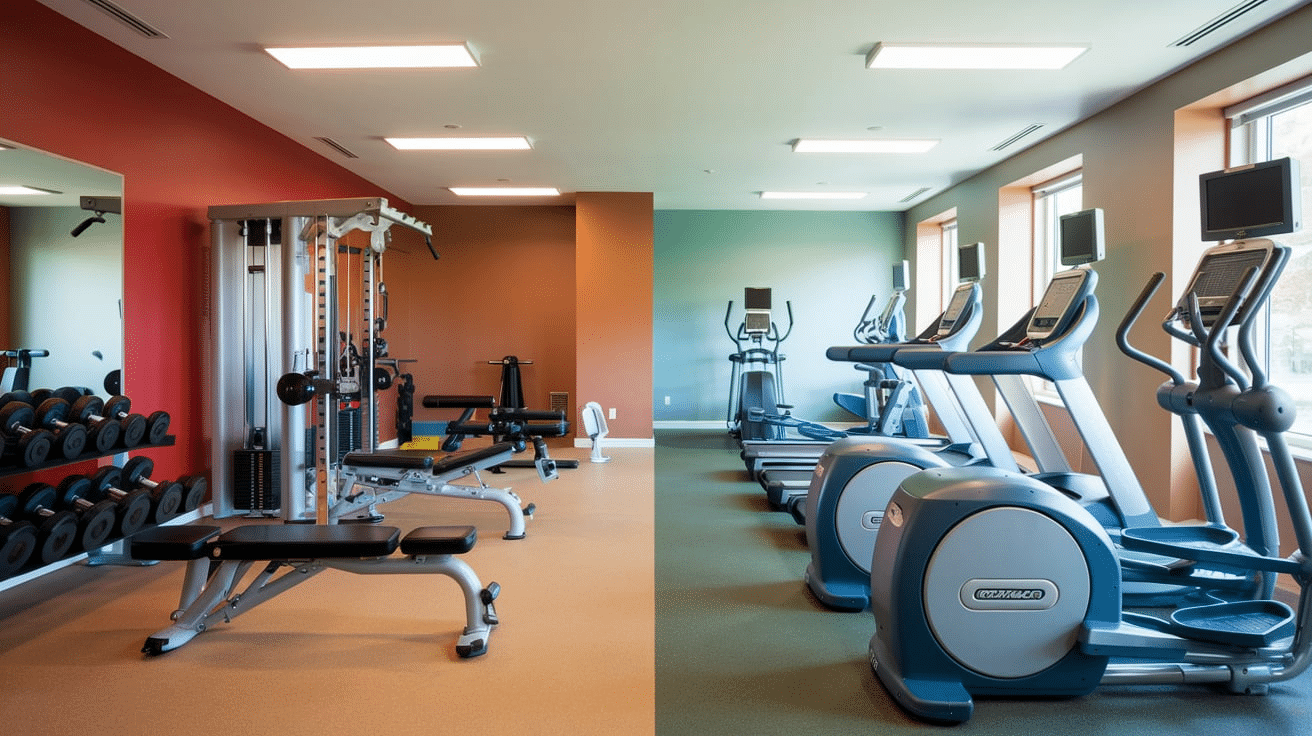
The visual and physical setup of your gym shapes how people feel and perform. It goes beyond paint and flooring—each element should support the space’s purpose and comfort.
Small changes in lighting, wall features, or flooring can help people feel more energized and focused.
When planned with care, these parts come together to create a space that works well and feels right.
Color Psychology for Gyms
Colors affect how people feel in your gym space. Red and orange create energy, making them good choices for high-intensity workout areas.
Blue and green help with calm and focus, working well for yoga or recovery spaces.
Yellow makes people feel happy and positive throughout the gym. Neutral colors are timeless and work with everything, giving you flexibility for future changes.
Your colors should match your brand while creating the right mood for your activities.
The right color choices can make people work harder during intense sessions or relax better in recovery areas.
A well-planned color scheme makes your gym feel unified and purposeful.
Lighting and Mirrors
Lighting greatly affects how people feel in your gym. Natural light improves mood and can reduce energy costs during daytime hours.
Adjustable lighting lets you change brightness based on time of day or activity type.
Extra lighting in specific areas improves safety, especially around heavy equipment or areas with potential trip hazards.
Good lighting does more than just help people see—it creates atmosphere. Bright, even lighting helps keep energy high in workout areas.
Softer lighting works better in recovery spaces or locker rooms.
Mirrors help in several ways throughout your gym. Place mirrors at eye level in weight training areas so people can check their form.
Use full-length mirrors in stretching areas to help with proper positioning.
Don’t put mirrors directly across from windows, as this creates glare and makes them less useful. Mirrors can also make spaces look bigger, which helps smaller gyms feel more open.
Sound and Acoustics
Good sound management is very important in gym spaces. Sound-absorbing panels on walls and ceilings can reduce echoes, which can make communication difficult.
Rubber flooring helps absorb noise from weights dropping and equipment movement. Create different zones for different music to suit various workout styles.
Put sound barriers between noisy and quiet areas so people can focus in both spaces.
A good sound system with speakers in different zones lets you have the right music in each area.
Air Flow and Ventilation
Good airflow prevents bad smells and keeps the air fresh. HVAC systems should provide 10-15 air changes per hour in gym spaces to remove moisture and odors.
Ceiling fans help move air around and create a more comfortable workout environment. When weather permits, windows that open can provide natural airflow.
Air purifiers help in smaller spaces where full HVAC systems might be impractical.
Proper ventilation is often overlooked but makes a huge difference in how people feel during workouts.
Good air quality helps people breathe easier during cardio exercise. It also prevents the stale gym smell that can turn off new members.
Consider gentle scents in locker rooms and entrances, but avoid strong fragrances that might bother some people.
Flooring Options and Materials
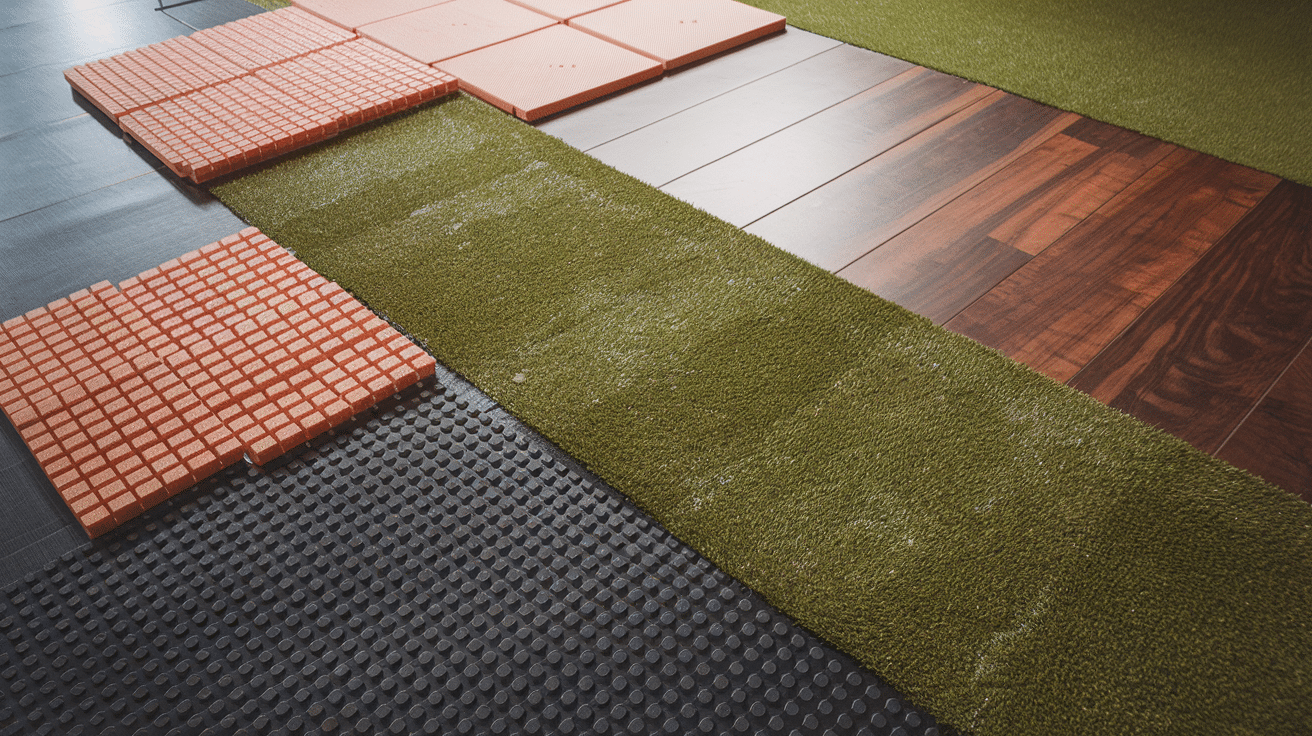
Choosing the right flooring plays a big role in your gym’s safety and comfort. You want something that can handle heavy use while also keeping members safe.
Different zones in your gym may need different types of flooring, such as rubber for weight areas and softer surfaces for stretching or recovery spaces.
It’s also smart to think about ease of cleaning and how well the floor holds up over time.
Best Flooring by Gym Type
Different activities need different floors for safety and comfort.
For weight areas, thick rubber flooring between 3/8″ to 3/4″ works best.
This protects the floor underneath from damage when weights are dropped. It also absorbs shock and noise, making the gym more pleasant.
Vinyl flooring or foam tiles are good options for yoga and stretching spaces. These surfaces provide cushioning for comfort during floor exercises.
They remain stable enough for balance poses while being gentle on joints.
For cardio areas, thinner rubber around 1/4″ thick or commercial carpet tiles work well.
These options are shock-absorbing but firm enough for the repetitive impact of running or jumping. They also hold up well to heavy machine use.
Rubber flooring is durable but can be expensive. Foam is cheaper but wears out faster. The hardwood looks nice but needs more care. Turf works well for functional fitness areas.
Equipment Planning and Customization
Choose equipment that fits your space and user needs. Include strength, cardio, and recovery tools. Look for compact machines with wide use.
Make sure the equipment is easy to maintain. Simple branding can pull the space together.
Choosing the Right Equipment
Select equipment based on your users’ needs and how they’ll use the gym.
For strength equipment, start with free weights that save space and allow many different exercises.
Cable machines offer versatility and are safer for beginners who are still learning proper form.
Consider the difference between plate-loaded and pin-loaded machines—plate-loaded cost less but require more work to change weights.
For cardio equipment, commercial-grade machines last much longer than home versions despite higher upfront costs.
Self-powered options save on electricity and don’t need to be near outlets. If your space is tight but you still want variety, look for models with smaller footprints.
For recovery equipment, foam rollers, and stretching mats are low-cost essentials that benefit all gym users.
Massage guns and compression systems work well in higher-end gyms where members expect extra services. These tools help with recovery between workouts.
Custom Branding and Visual Touches
Make your gym stand out with thoughtful branding touches throughout the space. Use your logo colors in the wall paint, flooring accents, and other design elements.
Add wall graphics that fit your gym’s style and reinforce your brand image. Include motivational sayings that match your gym’s attitude and inspire members during workouts.
Create a consistent look for all signs and materials so the brand feels unified.
Your gym’s look should tell people what kind of place it is as soon as they walk in.
Learn from Competitors: Market Research Tips
Visit other gyms in your area to see what works in practice. Take notes on their layout and equipment to understand real-world solutions.
Notice which areas are busy and which sit empty to help with your space planning.
When possible, ask what members like and don’t like about the facility. Check their pricing and offerings to understand the local market.
Good research saves you from making costly mistakes. You can learn from others without having to try everything yourself. This step often reveals local preferences you might not have considered.
Several tools can help with your research process. Simple spreadsheets let you compare features and offerings across different gyms.
Photos (taken with permission) provide a visual reference when planning your own space.
Online review sites reveal what members say about local gyms and their pain points. Fitness industry reports offer data on current trends and what’s working broadly.
Maintaining and Updating your Gym
Keeping your gym in good condition is important for safety and user comfort.
Create a regular schedule for cleaning, inspecting, and replacing worn equipment.
Check for small issues early so they don’t turn into bigger problems later.
Maintenance Tips
Regular upkeep keeps your gym safe and looking good for years to come. Implement daily cleaning of all equipment surfaces to prevent germ spread and maintain appearance.
Schedule weekly deep cleaning of floors to remove built-up sweat and dirt. Perform monthly equipment checks to catch small issues before they become big problems.
Set up quarterly preventive maintenance on machines to extend their lifespan and ensure safe operation.
Create a cleaning schedule with clear responsibilities for staff or family members.
Planning for Future Upgrades
To make your gym easier to update as fitness trends change over time, use modular systems that can be reconfigured without major construction.
Leave some open space for new equipment you might want to add later. Install extra electrical outlets for future needs, so you’re not limited by power access.
Think about how technology might change fitness, such as creating spaces that could accommodate virtual training systems.
Conclusion
Creating a gym that works well for your space and users takes time and thoughtful planning.
Each step matters, from choosing the right equipment to setting up a layout that feels open and easy to use.
Always think about how your choices affect the people using the gym every day.
Stick to your budget, focus on comfort and safety, and remember—small details can make a big difference.
Listen to feedback, and be open to changes as your gym grows.
In the end, a well-planned gym isn’t just a room full of machines—it’s a space that helps people stay active, reach their goals, and enjoy their time.

